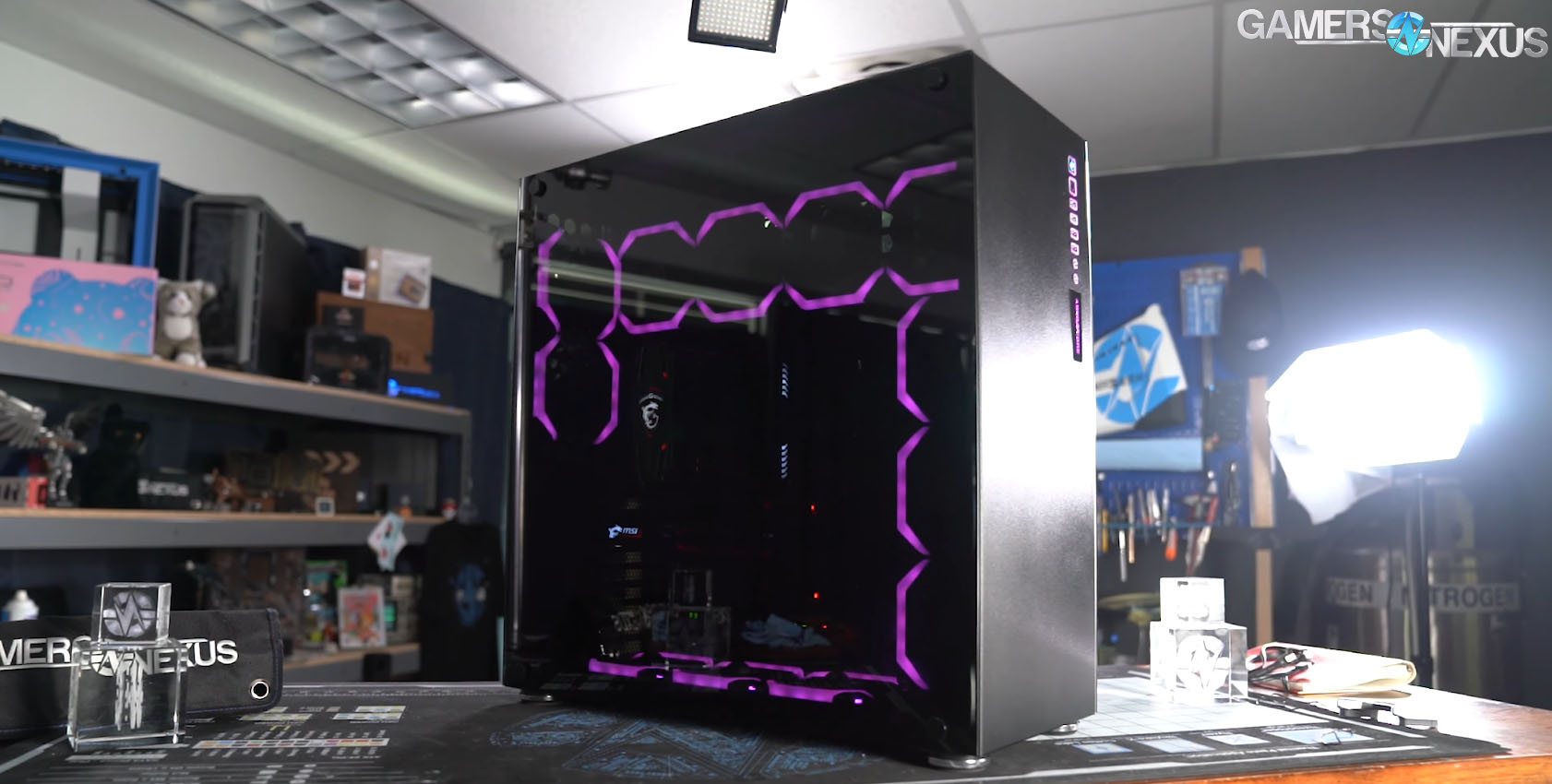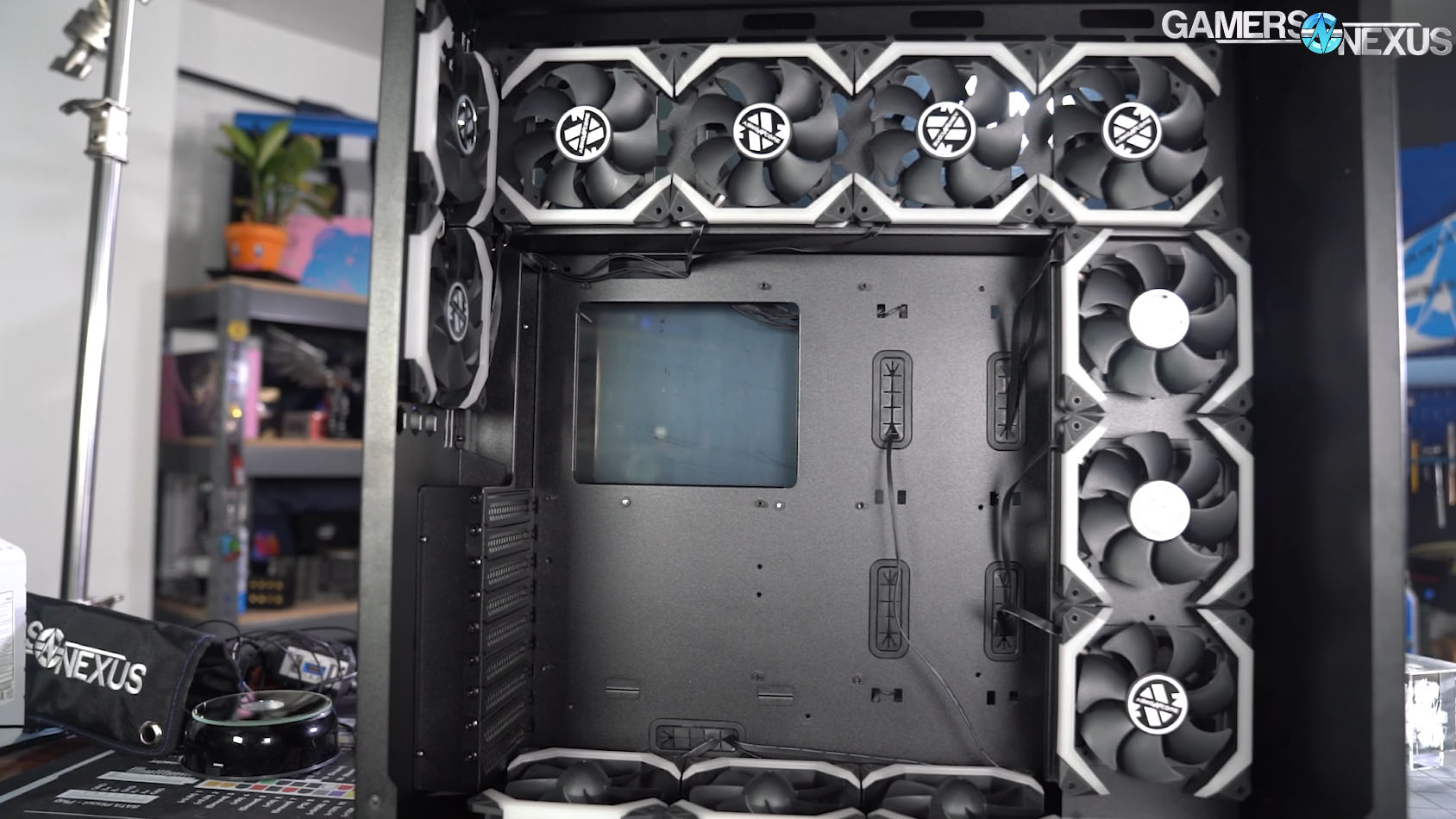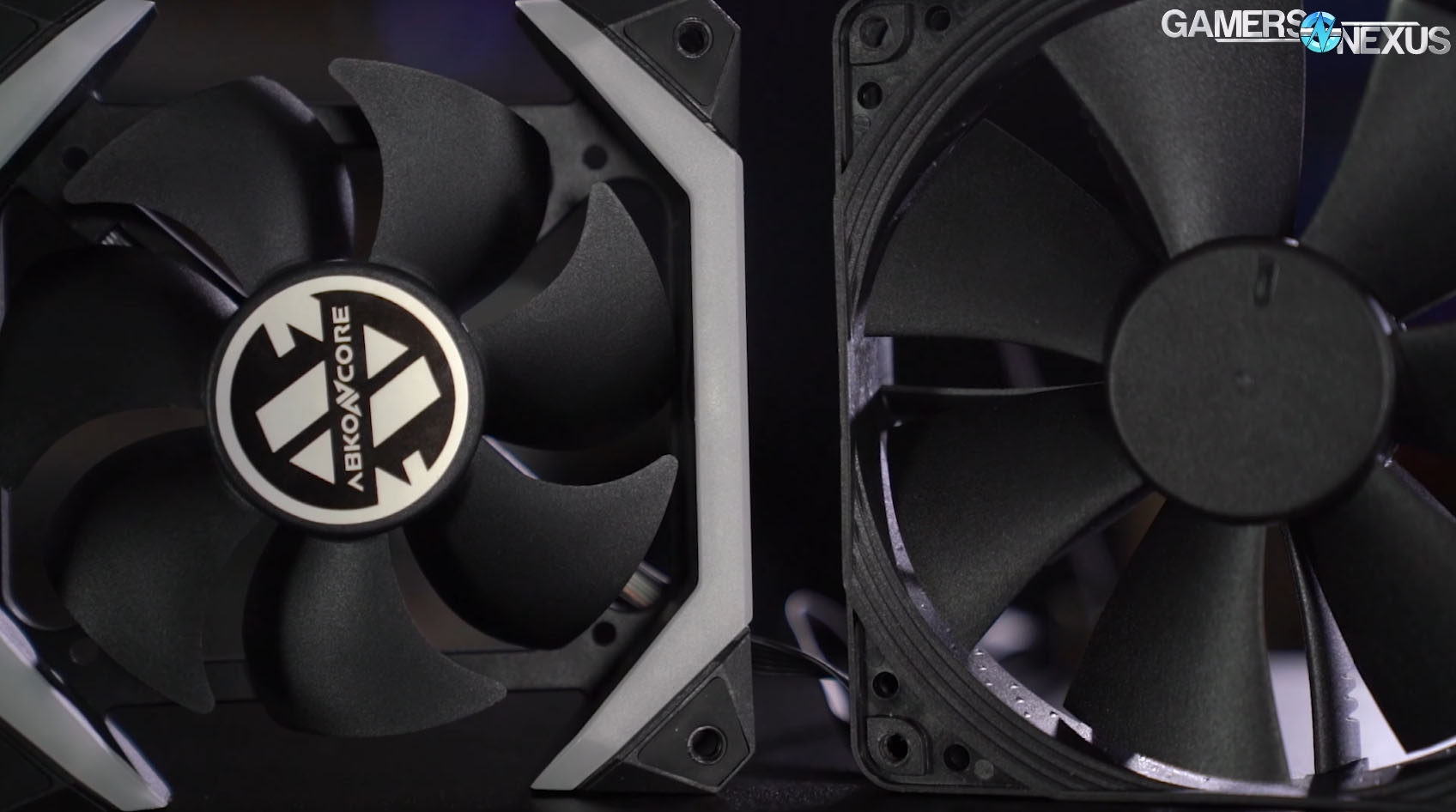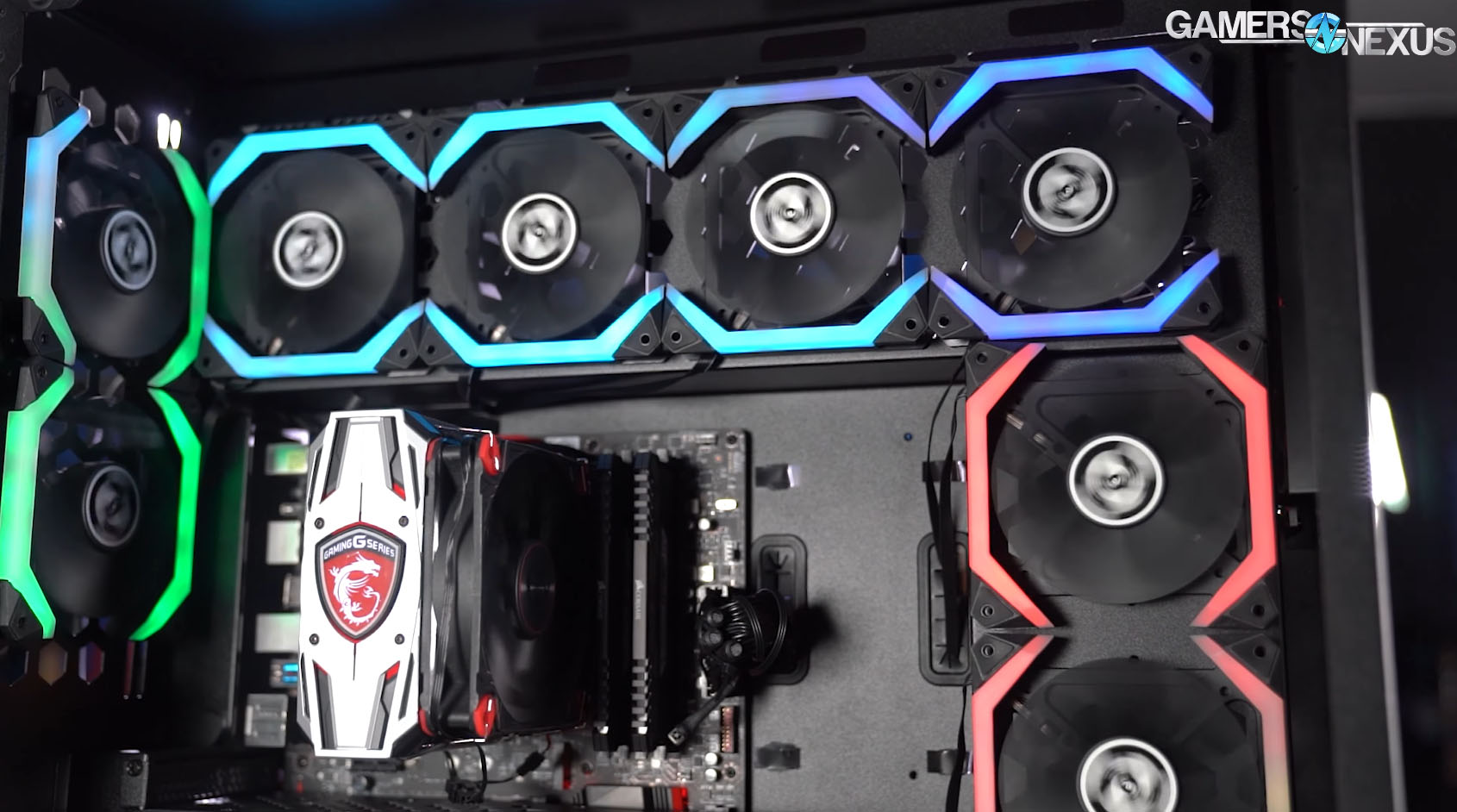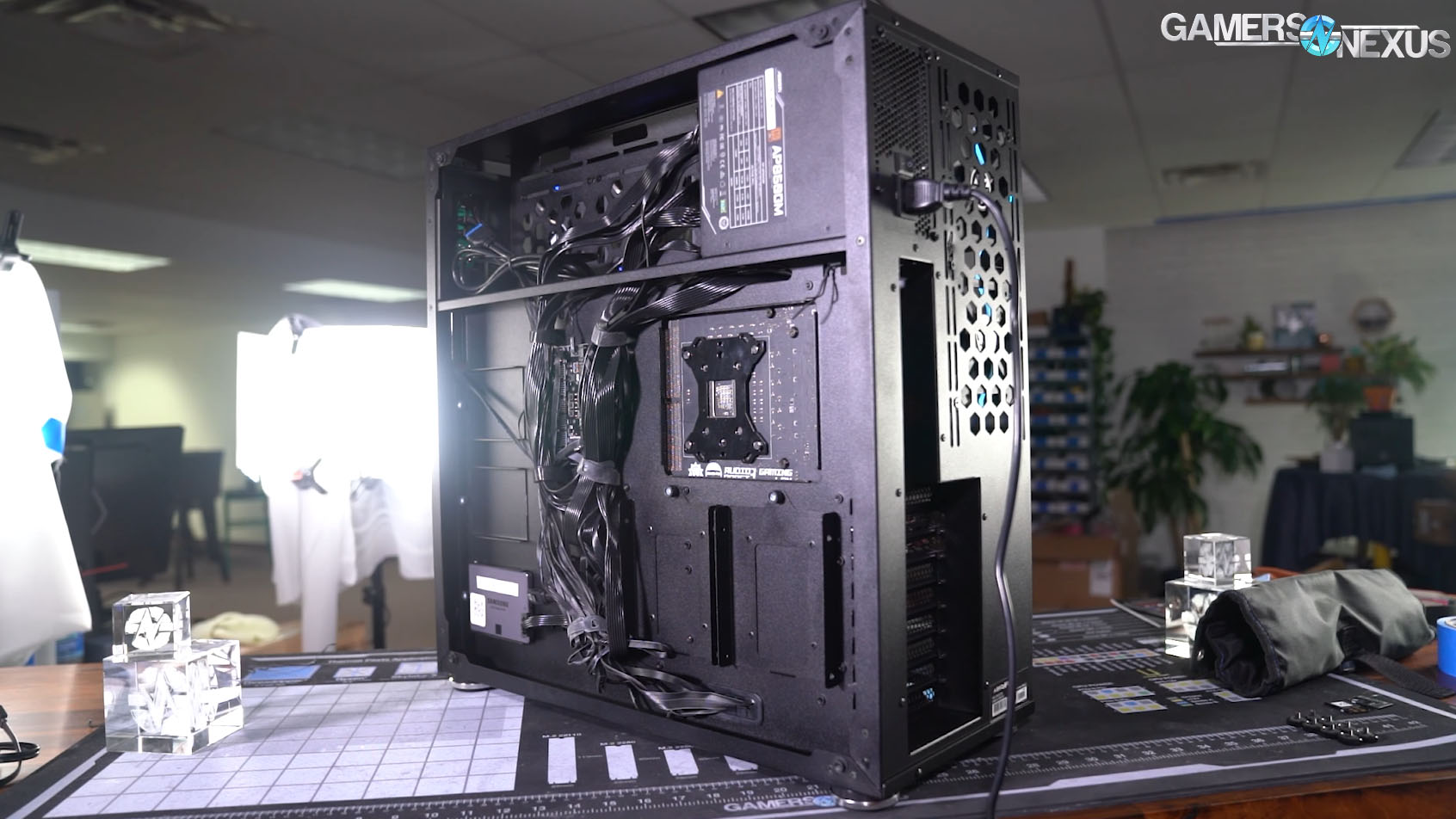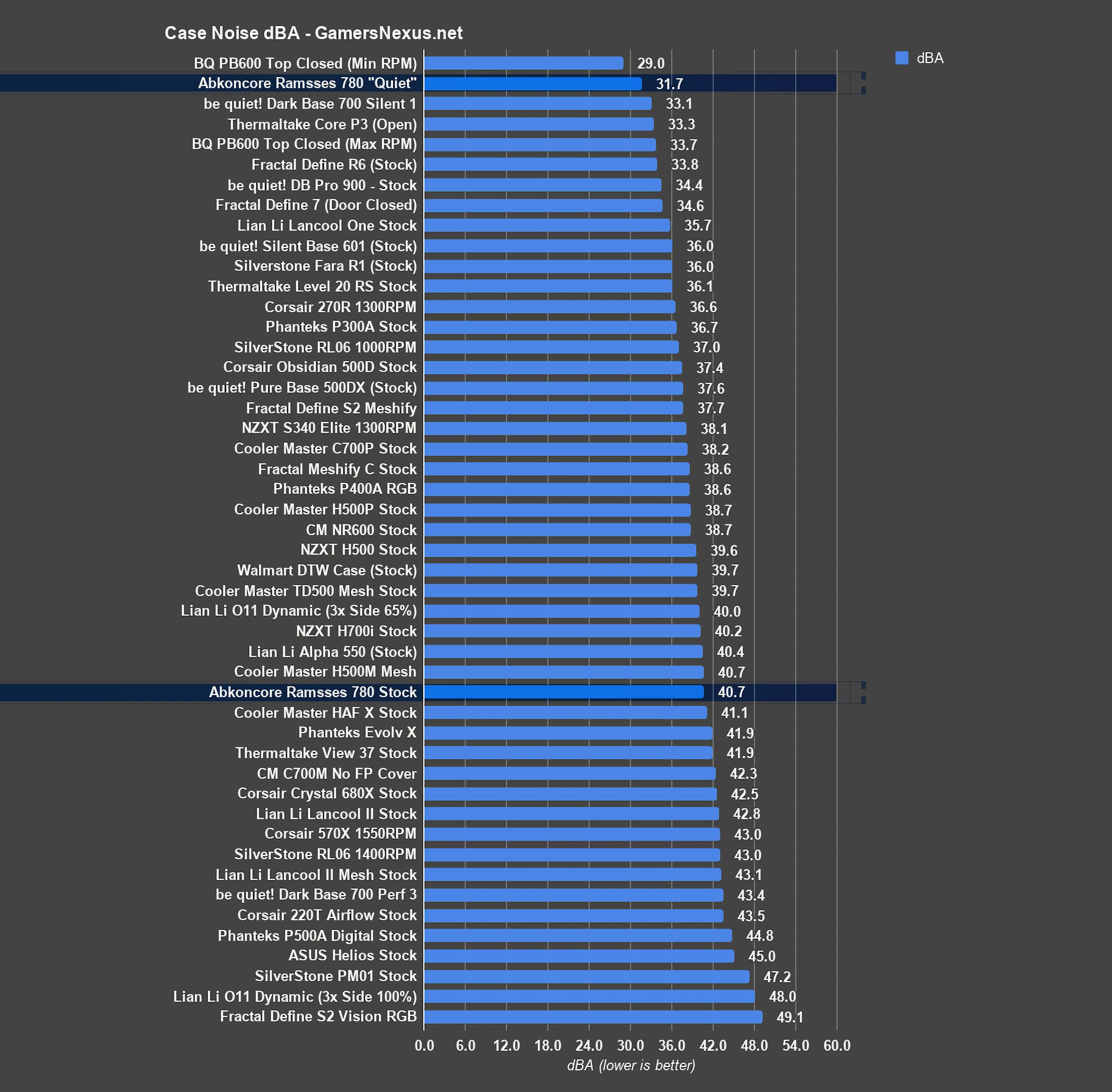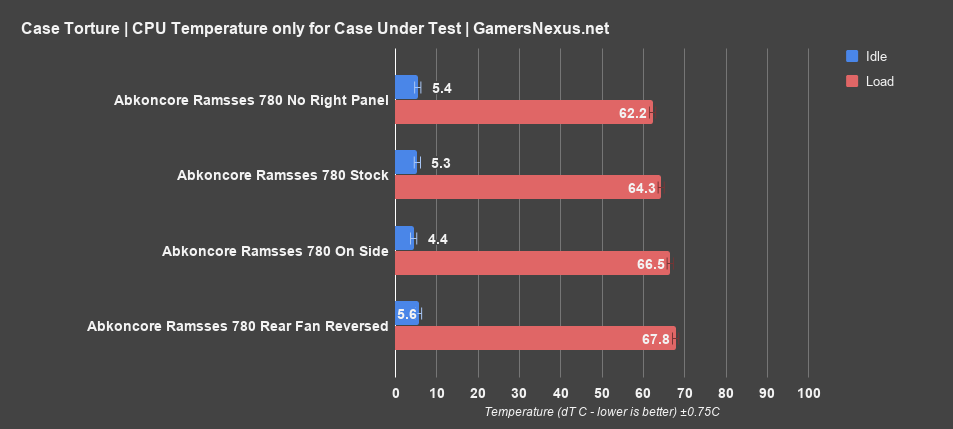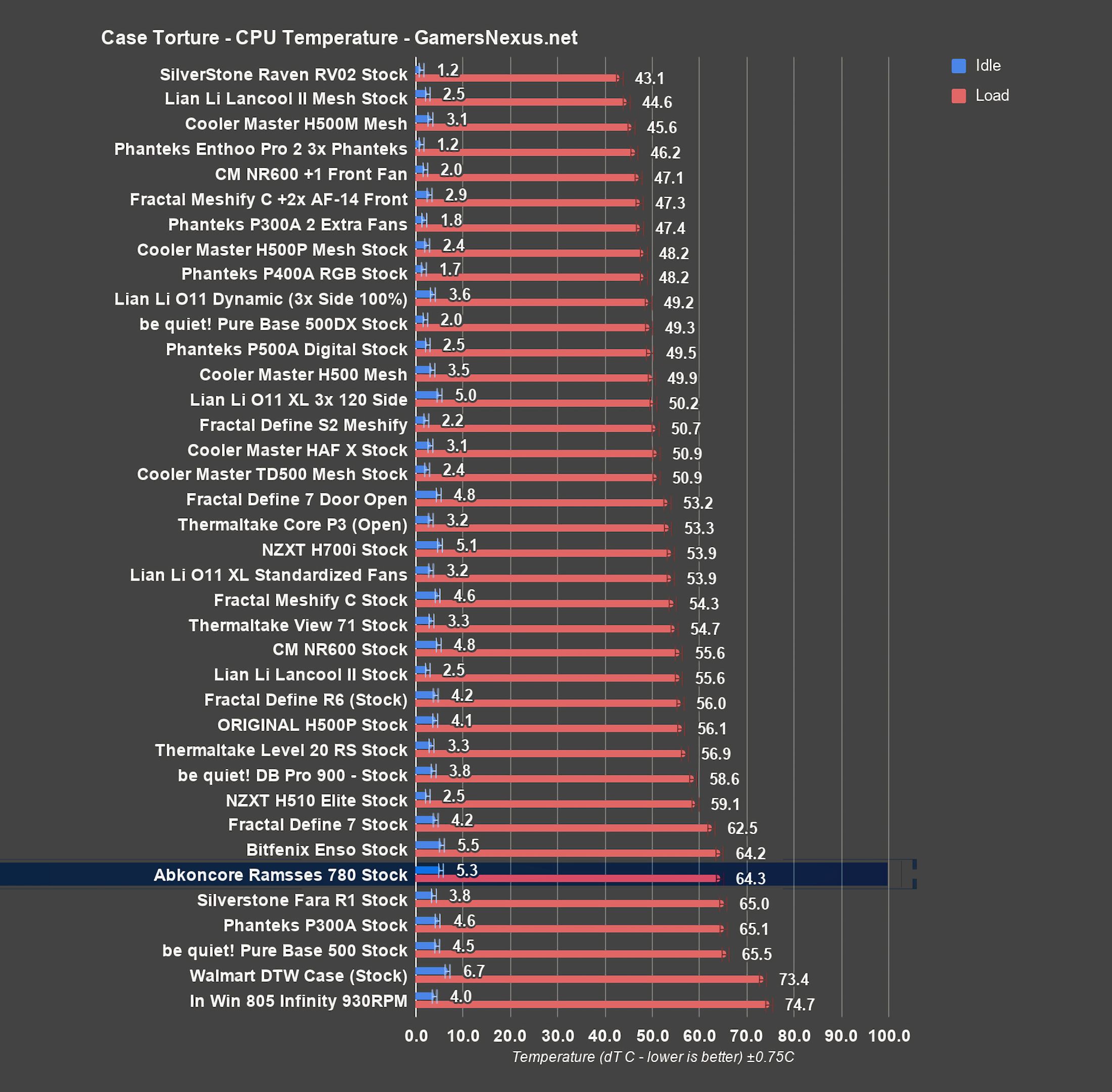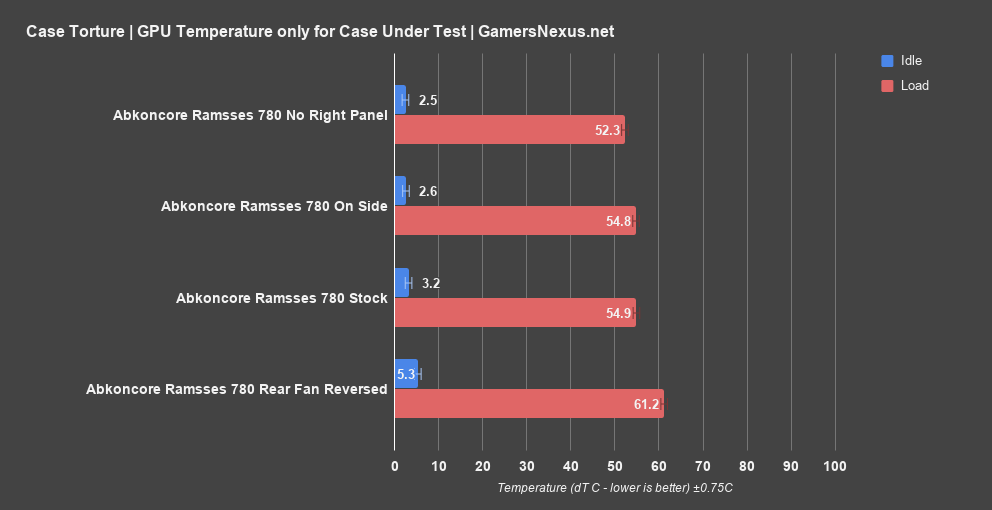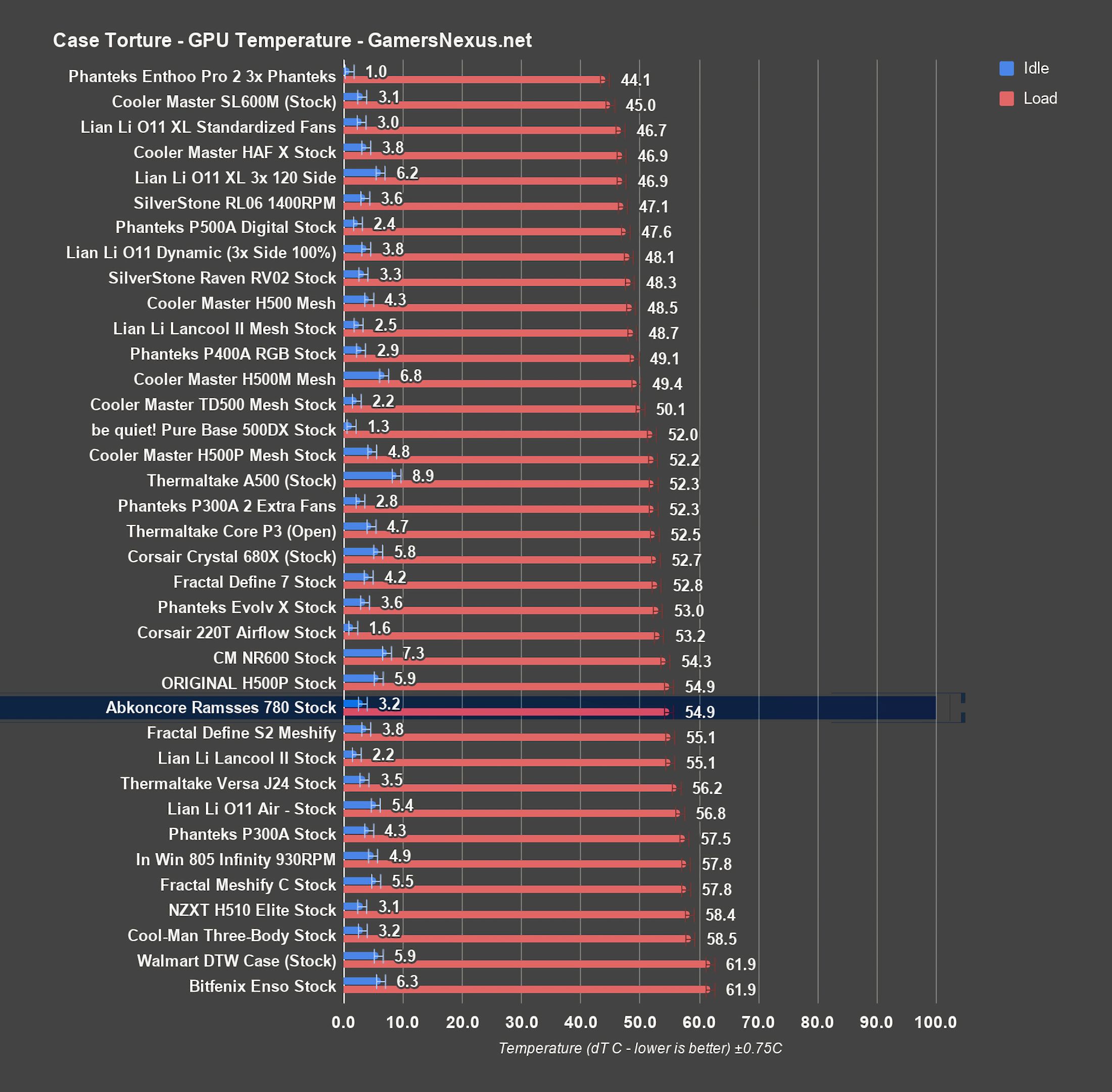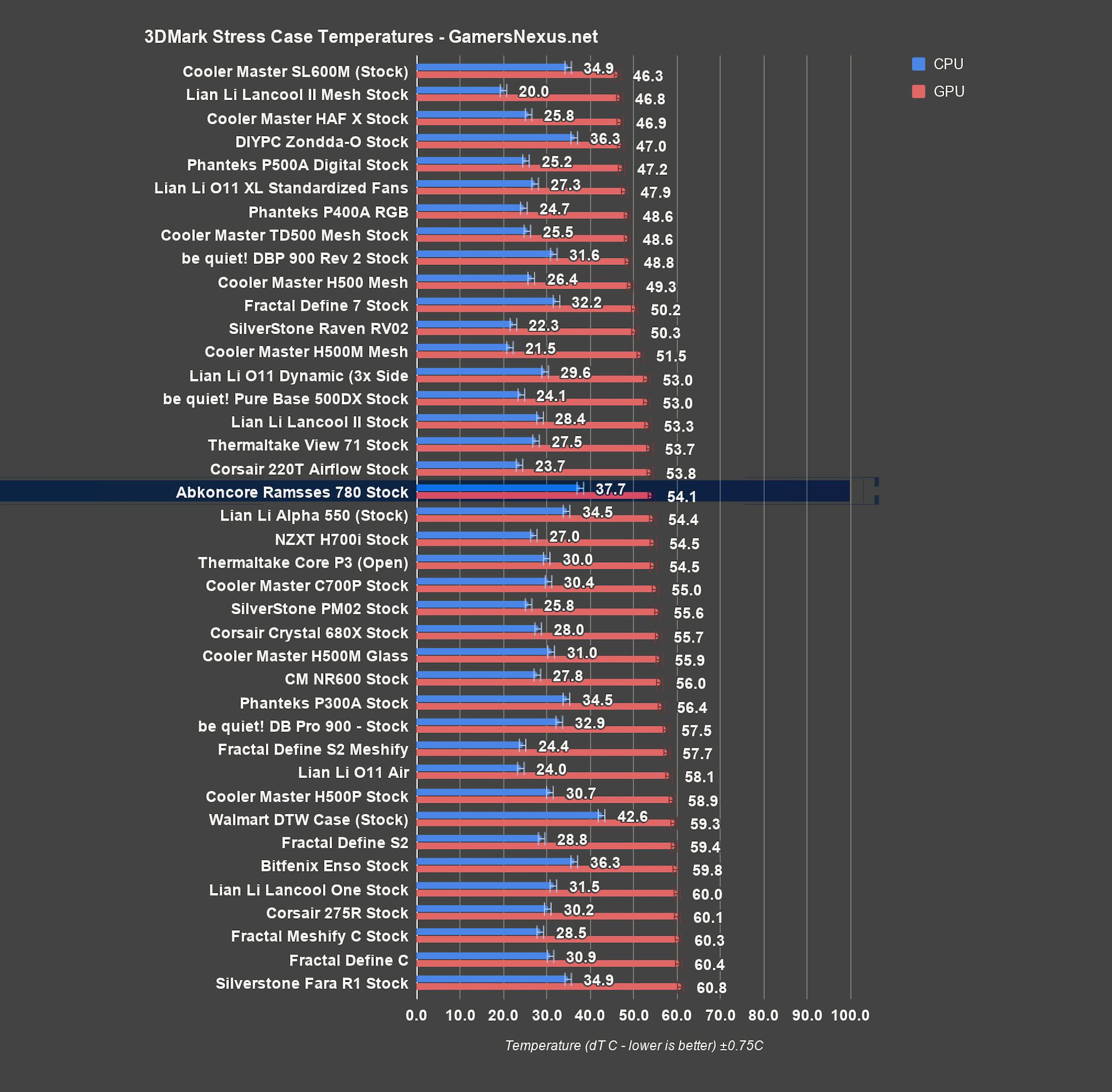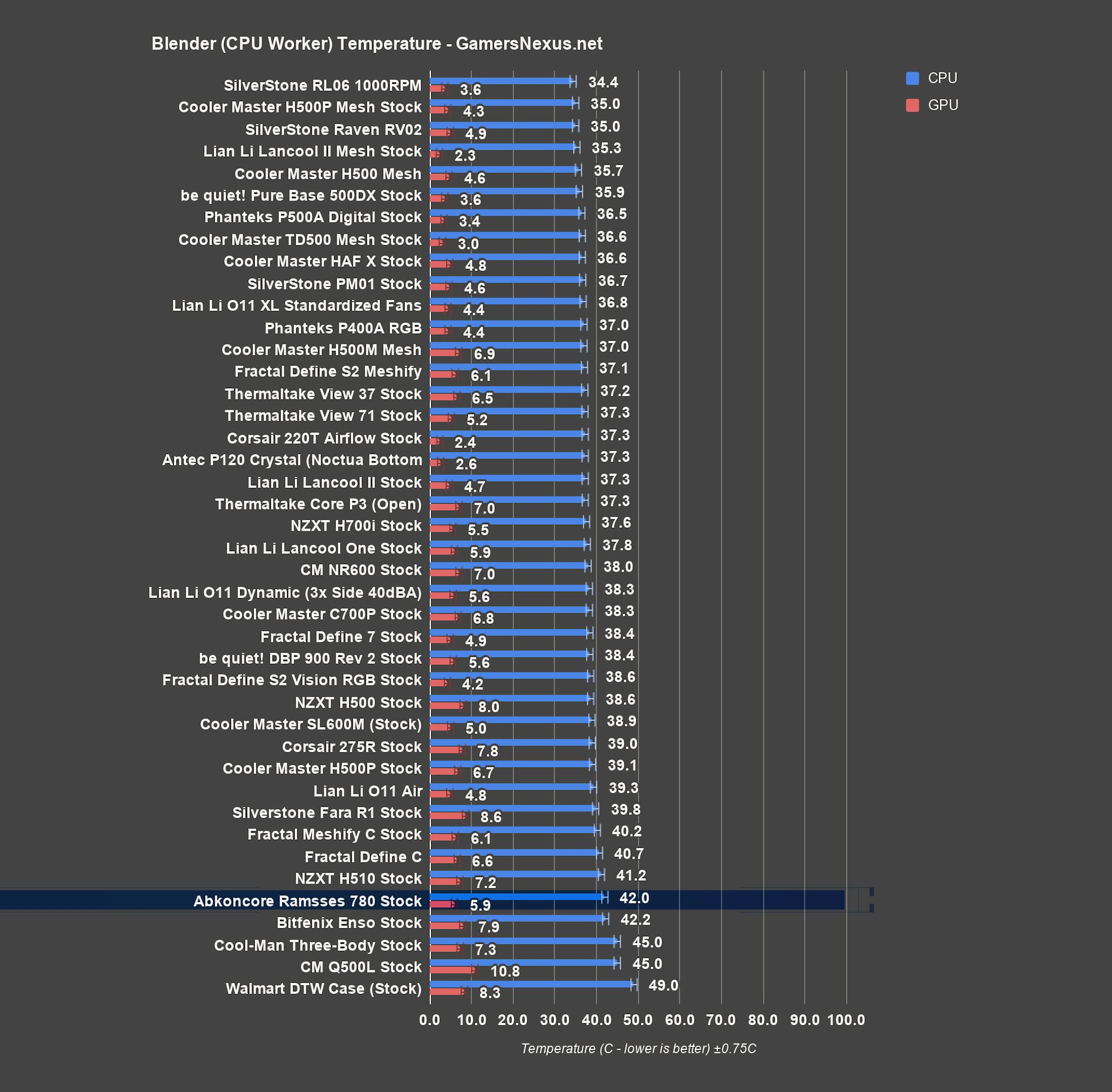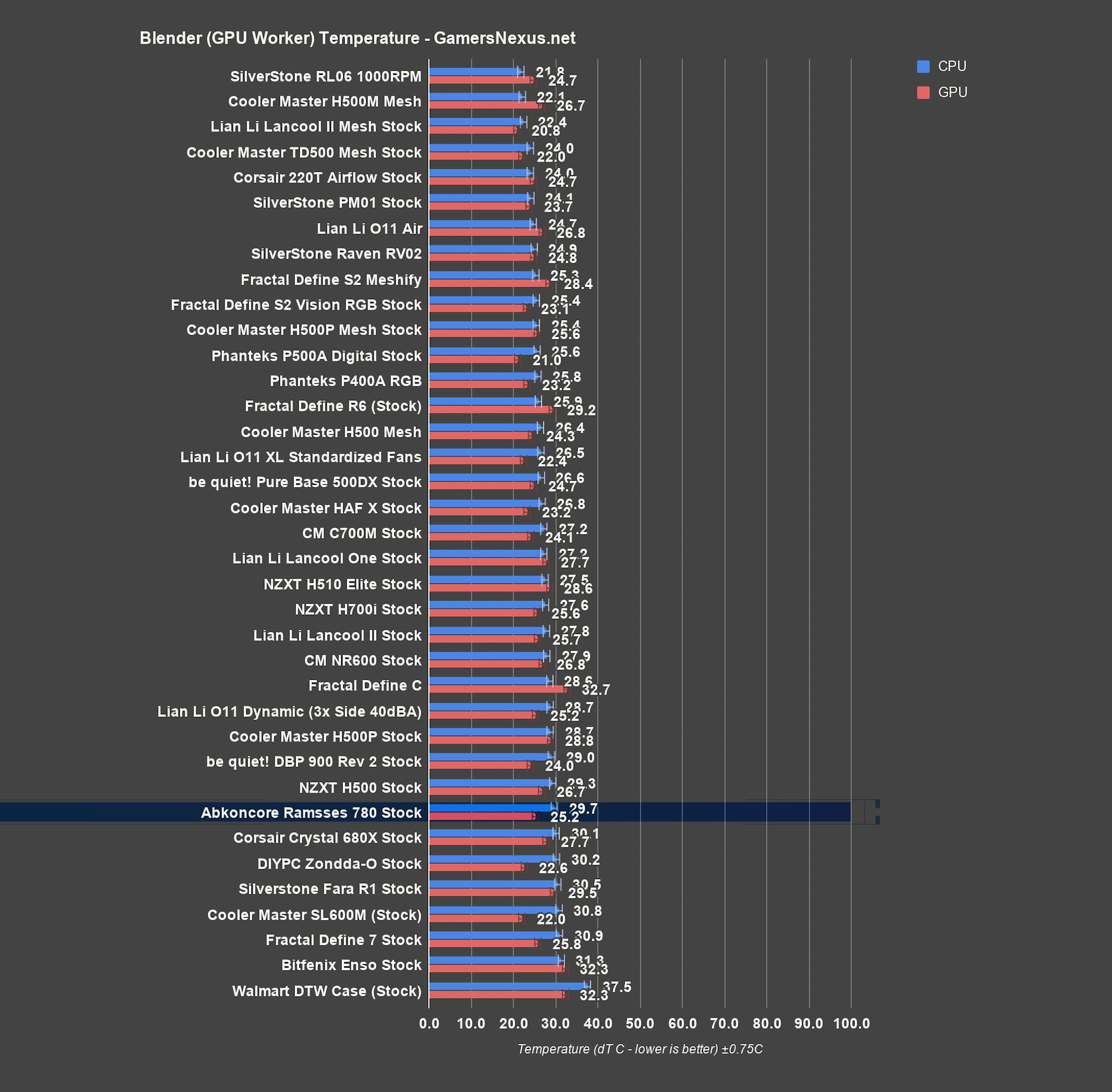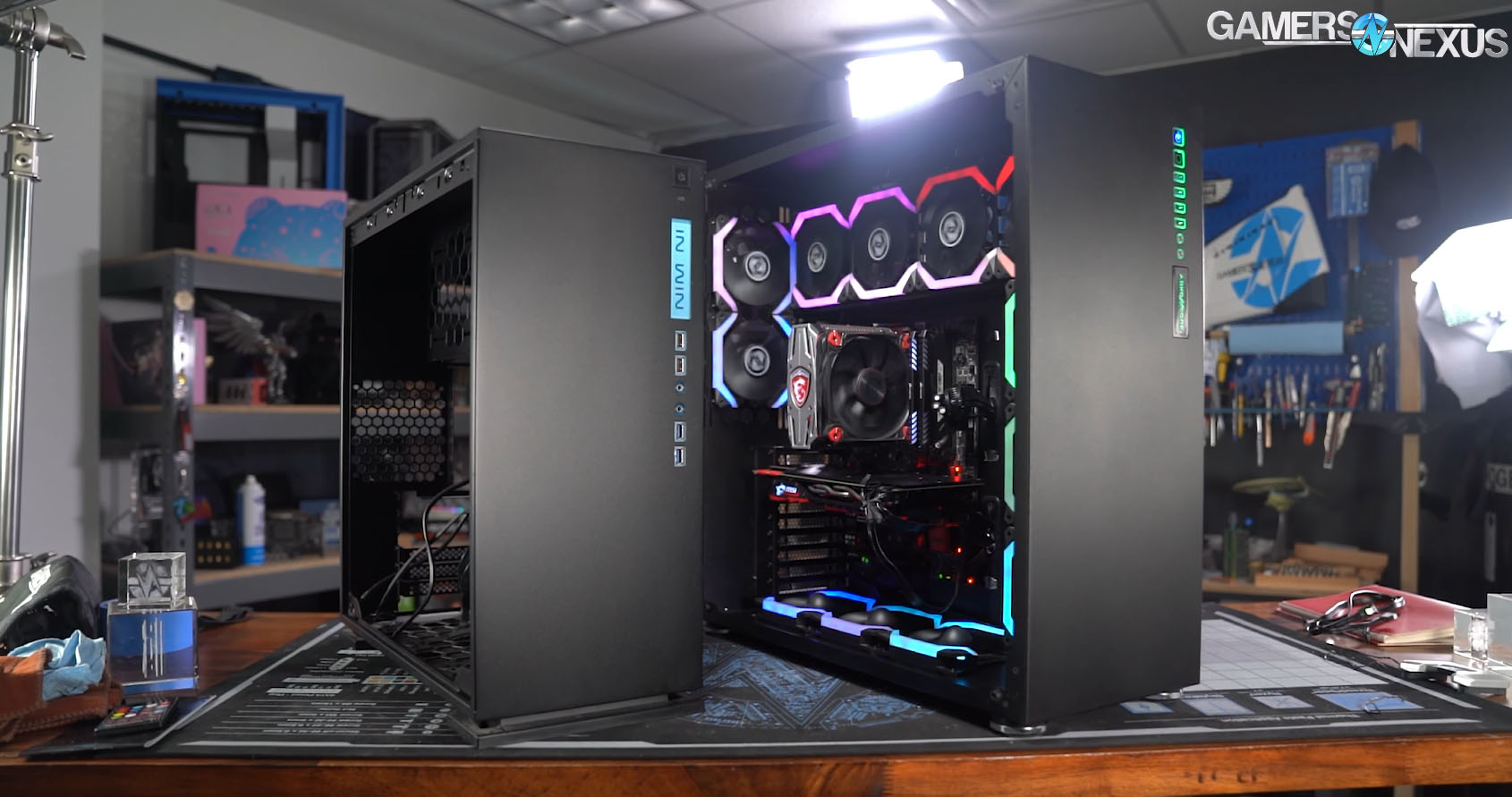The Abkoncore Ramesses 780 is a case that our friend Brian from BPS Customs discovered back in mid-2019. He dubbed it “the most interesting case I’ll never build in,” and with encouragement from our benevolent community he then decided to dump it on us. At first glance, the 780 is a full-tower that seems visually inspired by the In Win 303, with the most unique feature being the twelve preinstalled 120mm ARGB fans. We say visually inspired because the 780 lacks most, if not all, of the functional features that merited our Editor’s Choice and Quality Build awards in our 2016 review of In Win’s case, which admittedly has flaws of its own to begin with. Let’s not mince words: the Ramesses 780 is a bad case, and it was specifically sent to us because everyone knew we would say so. That makes it hard to decide where to begin, so we’ll treat this like a normal review and start with the build process.
Dimensions (WxDxH) | Chassis: 240 x 550 x 550mm Total: 269 x 550 x 568mm |
Weight | 16kg |
Motherboard Support | Mini-ITX, Micro-ATX, ATX, E-ATX |
Power Supply Support | ATX |
Expansion Slots | 9ea |
Drive Bays Support | 5.25": [none] 3.5" HDD: (Max) 5ea 2.5" SSD: (Max) 5ea |
I/O Port | USB 3.0 x 2 / USB 2.0 x 2 HD Audio, Mic |
Cooling Fan | PSU Cover: 120mm (Max) 4ea or 140mm (Max) 3ea Rear: 120mm (Max) 2ea or 140mm (Max) 2ea HDD Bay: 120mm (Max) 3ea Bottom: 120mm (Max) 3ea |
Radiator | PSU Cover: 120mm/140mm/240mm/280mm/360mm/480mm Rear: 120mm/140mm/240mm/280mm Bottom: 120mm/240mm Multi Bracket: 120mm/240mm/360mm |
Clearances | CPU Cooler (Max): 195mm GPU/VGA (Max): 345mm |
*specs table taken from manufacturer’s website
THE BUILD
A standard gaming PC case in 2020 has six sides. Of those, it has ventilation on at least three, maybe four. The 780 has ventilation on two: the bottom and the rear. There are no vents on the top, front, or either side of the case. The Newegg listing for the 780 says “OPEN THE WIND WAY: The space between the side tempered glass and chassis draws cool air directly to th [sic] case.”
This is not true: the glass panels can be tightened down flush with the edges of the chassis. The size of the air gap depends entirely on compressible rubber washers between the glass and the case body, which are less than 1mm thick at the base even before the panels are tightened down. It’s hard to articulate just how absolutely, mind-numbingly stupid the airflow arrangement is. The four fans at the top of the case push air into the PSU chamber, where the only route for exhaust is the PSU itself. The three oddly-shaped fans at the bottom of the case are the only intake fans in the entire case, and the stubby case legs lift them just 2cm off the ground. The three fans at the front of the case are utterly pointless: they’re just mounted to a metal bar that can optionally be repurposed for SSDs or HDDs. Using them for drives would make much more sense: remember that the front and both sides of the case are sealed, so all these fans can do is recirculate air inside the case. The two rear exhaust fans are the only ones that make any sense, and they alone shoulder most of the burden of cooling the case.
All twelve of the fans in the case are 120mm “Spider Spectrum” models, and the three on the bottom of the case are specifically the “reverse” version to ensure that every fan in the case is LED-side-up. Now, we’ve had some experience with “Spider” fans before -- mostly those which introduced us to the marketing phrase “biomimetic legs.” We have many problems with these fans.
First, they’re an artistically cut-down design with gaps in the frame and smaller-than-normal fan blades to avoid damage on their unprotected edges. The blades are 10cm in diameter, compared to 11.4 on one of the Noctua fans we use for standardized testing. The result is a fragile product that’s only meant to be mounted in one direction and has less blade surface area than a normal 120mm fan. Many of the fans were screwed so tightly into the case that the metal brackets bent and the rubber noise-damping bumpers at the corners of the fans were squeezed through the holes. The reverse model Spider Spectrum has a point molded into the fan hub that projects upwards and makes it impossible to mount face down. The fan grille at the rear of the case has a lot of metal and relatively few holes, but the holes that are present are wide enough to fully insert a finger--the worst of both worlds.
All of the fans come with six-pin combined RGB/fan cables we’ve come to hate that can only be connected to the included fan hub. Marketing images and the manual for the case depict this hub as a nice plastic-enclosed unit, but those are evidently from the past, as the hub that came with our case was just an open PCB. The hub is powered by two molex connectors which are daisy-chained together out of the box.
One might wonder why Abkoncore bothered using two molex connectors if they’re both going to be plugged into the same cable. The hub can optionally be connected to the reset button of the case to cycle through the baked-in LED modes, most of which are unpleasantly jerky even with the speed turned up.
That’s unfortunate, since the glass tint is very dark, so only the only things visible inside the case are the LEDs. Other than the reset button, the hub can be controlled by three onboard buttons for fan speed, LED mode, and LED speed, or by an infrared remote. Brian noted that the remote didn’t come with a battery, and he was kind enough to remove his before mailing it to us so we could get the true customer experience.
Notice we didn’t mention the motherboard as a method of control. There is no way to control LEDs via a motherboard header, there is no way to control fan speed via a motherboard header, and neither the fans nor the LEDs can be connected to anything except the hub because of the proprietary six-pin connectors. There are 24 buttons on the remote: twenty-two of them are for LED control and two of them are for fan control, one of which is “fan off.”
The only way to control fan speed at all from outside the case is to point the remote at the IR receiver and hit the “Fan +/-” button, which toggles between two fan speeds. The upper speed is approximately 1300RPM and the lower is approximately 640RPM. That’s it. The IR receiver is a small box on the end of a cable, but even with that extra flexibility we had problems using the remote through the steel walls and dark tempered glass of the case, which (again) is the only possible way to control fan speed without taking the side of the case off and hitting a button on the PCB itself.
Claimed radiator support goes up to 480mm for the upper mount, and installing max-size radiators in the Ramesses 780 doesn’t conflict with EEB motherboard compatibility or necessitate mounting any radiators tubes-up. The 780 can also fit up to a 280mm radiator at the rear, which is highly unusual--cases rarely have enough vertical room above the expansion slots for more than one fan. The counterpoint to all of these positive features is that the bottom 240mm mount is the only one directly exposed to cool air, and it barely has any clearance, and if the stock fans are used with a bottom-mounted rad then they can only be installed in a pull configuration because the pointy fan hubs won’t fit underneath a radiator. Mounting a CLC’s radiator below the level of the pump isn’t a great idea for longevity or noise, so it’s unfortunate that this is the “best” location. There are plenty of mounts in this case that can physically contain a radiator, but none of them are good--the top mount overlaps the PSU and has no access to cool air, the rear mount pulls the entirety of the system’s hot exhaust, and the front mount is decorative. Even the “physically contain” bit comes with a caveat, since rads installed in the top and rear mounts are mutually exclusive.
Front I/O closely resembles In Win’s, with a similar vertical arrangement and acrylic logo badge. Abkoncore’s is LED illuminated and syncs up with the case lighting, which might be nice, but it does also make it impossible to distinguish between the blue USB 3.0 and black USB 2.0 ports when the system is on. We’re happy with the four USB type A ports and two separate audio jacks, but the lack of a USB C port or more USB 3.0 is something of a letdown in a case this expensive. The biggest failure of the front panel is that it has no labelling whatsoever, so we still don’t know which jack is a line in and which is a line out. In Win didn’t label theirs, either, so Abkoncore continues to successfully imitate the worst possible aspects of the 303.
There was minor damage to the case when we received it: one small chip taken out of the edge of a glass panel, and a more serious warp in the surface of the PSU chamber where it appears that a rivet was driven in the wrong location. Since the case was first shipped to Brian, unpacked, repacked, and then shipped to us, there’s a chance that at least the chip didn’t happen at the factory--but given that Brian didn’t even take off the plastic wrap, it probably did. The tempered glass panels on the 780 are some of the largest we’ve ever seen, only slightly smaller than the Anidees AI Crystal’s, a case we haven’t formally reviewed but use out of necessity to house a large production system. A noteworthy difference is that the AI Crystal uses eight evenly spaced thumbscrews per panel compared to four on the 780, and the AI Crystal’s panels are 4.85mm thick compared to 3.9mm on the 780. The Ramesses 780’s panels feel disconcertingly thin in comparison, especially since one of them has to withstand pressure from cables in the center with only four screws at the corners. Abkoncore also makes a point of advertising “exceptional thickness of 1T” in regards to the steel case components; we measured the panels to be 1.15mm thick.
The easiest way to “fix” this case would be to replace the right side panel with a steel one that has some ventilation cut into it, raise the legs to allow better airflow to the bottom fan mount, and cut some holes in the motherboard tray to allow the front fans to exhaust. At this point we’re describing features of the In Win 303 and Lian Li’s O11 cases, both of which are conveniently cheaper than the Ramesses 780.
Clearance around the edges of the motherboard is fine, but not nearly as good as the size of the case might suggest. The fact that the motherboard is bordered on three sides by fan mounts limits the margin available for cables and cutouts to just under 2cm at the top edge of the board and 6cm below the bottom edge, and the cutouts at the bottom edge also have to contend with exposed fan blades. The front edge is the best option for routing cables, as there are two rows of cutouts, one of which is intended for full-width SSI-EEB motherboards. That’s perhaps the most positive thing we can say about this case: it will fit 13 inch wide motherboards without compromises, and the front fan mount can be removed for even more room if desired.
We mentioned the top, bottom, and front edges of the motherboard, but not the back edge. That one’s tricky. Abkoncore has shifted the motherboard placement away from the back of the case by approximately 4.5cm, presumably to keep the rear exhaust fans (and rear radiator, if one is installed) from overhanging the motherboard and getting in the way. It’s common for boards to be offset by about 1cm so that expansion cards can be fully contained within the interior of the case (recent example: Enthoo Pro 2) rather than partially sticking out the back (recent example: pink Phanteks P400), but by moving the board so far forward into the case interior, Abkoncore has made it nearly impossible to access rear I/O. Reaching around this giant case and rooting around for a flash drive buried in the rear panel is pointlessly difficult, and telling audio jacks apart is downright impossible.
The cable cutouts in the motherboard tray could be a bit larger without interfering with anything, but at least there are enough of them to get the job done. The bottom fan mounts should be shifted over several centimeters away from the motherboard to give the lowest cable cutouts more room, and the case legs should be significantly thinner to make more area available for the fan mounts--this was a poor design choice. More problems appear behind the motherboard tray, where the 780 shares some problems with the 303. The upper PSU chamber is huge and can contain all the power cables with room to spare, but it’s not where active power cables actually need to go and it has no cutouts that lead directly into the main body of the case, so it’s a dead end that’s only useful for containing slack and leftover unused cables. It’s not ideal for that purpose either, since cable clutter in this chamber directly conflicts with the fan mounts along the surface of the shroud. All active cables must be routed through two cutouts in the bottom of this chamber into the space behind the motherboard tray and then to their destination. If they don’t go this way, the side panel won’t even close. Behind the motherboard tray the space available to cables is a generous 3cm, but this space is dramatically reduced with any drives installed. There is no dedicated cable management channel that’s free of interference from drive sleds or the fan controller. The fan controller is mandatory and is connected to twelve fans, two power cables, an IR sensor, and the front panel reset switch, so cable management is a major concern for this case right out of the box. Tie points for velcro straps are present but not pushed out from the surface of the tray, so threading straps through them is difficult.
NOISE & THERMALS
We opted to treat this like a normal case review, so our original plan was to do our entire case testing suite in this case, but we ran into some obstacles with two of our usual tests. First, the noise normalized test is impractical since the case fans only have two speeds. At the higher speed, the fans run at about 1300RPM and case noise is 40.7dBA. At the lower speed, the fans are reduced to about 640RPM and case noise is 31.7dBA. There’s an off button for the fans, too, so the case can also be silent--be quiet!, we hope you’re taking notes on this genius feature. This just in: No fans is the best. Our noise normalized threshold is 36dBA, so we’d have to either jury-rig a method of tuning fan speed or remove fans to match that number. We also had concerns about the safety of our test components, which is why we couldn’t run our standardized fan test in this case. We’ll cover the numbers in a moment, but it should be obvious that if we have thermal concerns with twelve fans in a case, swapping them for three fans is probably not better.
The fact that every fan mount is already populated limits our ability to try to find more ideal configurations, but we tried a couple. First, we tried simply placing the case on its side so that the bottom intake fans would have more room to breathe, then tried removing the entire right side panel (with the case upright again) to allow the upper fans to exhaust out of the case, and finally we tried flipping the rear exhaust fans to an intake configuration. We didn’t flip the CPU cooler’s fan to match, which normally would merit another test, but the numbers we got are already pretty conclusive.
CPU Torture
With the stock arrangement of twelve fans, CPU temperature averaged 64 degrees Celsius over ambient. Flipping the case on its side raised that average to 67 degrees as the bottom intake fans pushed more hot air around the GPU and into the upper section of the case, while removing the side panel for more effective exhaust in the upper section lowered the average to 62 degrees over ambient. Reversing the rear fans raised the average to 68 degrees Celsius--as we mentioned, the CPU cooler fan’s orientation wasn’t flipped for this test, but more importantly flipping the rear fans removes the only point of exhaust in the case. The rear fan mounts are the only unobstructed path to fresh air: this was the best chance for the 780 to improve, and it just can’t. There’s no more logical way to get cool air in and hot air out of the case than the stock fan arrangement.
Comparatively, 64 degrees ties the Ramesses 780 with the notoriously hot Bitfenix Enso for CPU thermals in this test, which is the most pathetically impressive thing we’ve seen since we tested the 805i Infinity. 64 degrees is in the range of stock performance of the Fara R1 and the P300A, cases that each ship with just one 120mm case fan. We were worried when we first saw this case that the twelve stock fans would make up for the poor design and that we’d have to spend time explaining that the 780 was just brute forcing airflow, but luckily Abkoncore made our lives easy by creating a case that won’t cool well under any circumstances.
GPU Torture
The GPU is the only component in the entire case that’s directly cooled with air from outside of the case, and it averaged 55 degrees Celsius above ambient in the torture test. Laying the case on its side didn’t change that average, because the bottom intake fans have more pressing problems than clearance, like being unable to pull any air through the bottom filter combined with the undersized vents they’re mounted over. Removing the right side panel did cool it off by a couple degrees for an average of 52 degrees Celsius. The whole system is a trap for hot air, and even though removing the entire right side panel only opens up the path for three fans, that’s enough to improve the thermals of the whole system. Reversing the direction of the rear fans predictably worsened GPU thermals with an average of 61 degrees--we never expected that test to help with the GPU, since both rear fans are placed above it.
Unlike the CPU result, stock GPU thermals for the 780 are just mediocre instead of awful. 55 degrees is on par with the original Cooler Master H500P or the Lian Li Lancool II non-mesh, which is just embarrassing for a case with this many fans. Three of those fans are pointed directly into the GPU cooler. Thermally, it’s hard to imagine a worse end result for a premise that starts with “build a box that twelve fans and a computer will fit in.”
Firestrike
Our next one is Firestrike Extreme on loop, which is a gaming stand-in test. The average GPU temperature was 54 degrees Celsius over ambient in this test, nearly the same as in the torture test and therefore in roughly the same spot in the product stack. The more interesting number here is the CPU temperature. We rarely see the CPU break 30 degrees above ambient for this test, since it’s designed to be a GPU workload. The Ramesses 780 managed to get the CPU up to an almost unprecedented 38 degrees in this test. The reigning champion for terrible-ness here is the Walmart DTW’s case, which pushed the CPU up to 43 degrees.
Blender
While doing the CPU-only Blender render test, the CPU temperature averaged 42 degrees over ambient, again one of the worst results we’ve seen--CPU cooling is a major weak point for this case. The Bitfenix Enso tied again at 42 degrees, while only joke cases like the Walmart DTW and the Coolman Threebody managed to do worse. Oh, and the Q500L. Even removing the GPU as a heat source, the 780 can’t keep up. Twelve fans.
Accelerating the render using the GPU raised the GPU temperature to 25 degrees above ambient, still fairly average, but in better company here than in the torture results. It’s tied with the Silverstone RV02 and the be quiet! 500DX, both of which are good cases overall.
Conclusion
This case sucks. We knew it would before it even got here, but it surpassed our expectations with its terrible thermal performance. It’s not even that it lands at the bottom of every chart, it’s the fact that it’s an expensive high-end full tower with twelve fans and performance equivalent to a $60 mid tower with a single 120mm fan. Even the most restrictive cases generally have some ability to brute force airflow given enough fans or liquid cooling, but the Ramesses 780 just can’t. We can’t find the Ramesses 780 for sale any longer despite it being a relatively young product, a couple years old at most, and the former https://www.x2products.com/computer-cases/abkoncore-ramesses-780-sync-abko-rms-780sync/+&cd=1&hl=en&ct=clnk&gl=us&client=firefox-b-1-d">top Google result for the 780 (at x2products.com) was replaced with a 404 error during the course of writing this article. It had been listed there at 260 Euros there, more than $300 US, which is more than we’d be willing to pay even if the case WAS good. There are some Amazon listings, but all are inactive. The most we’d be willing to spend on this case is the price of shipping it to someone else and making it their problem: Brian had the right idea. We can’t even strip the fans and use them in a different case without using the terrible fan hub they’re connected to. The most useful part of this case is the pair of cotton gloves they sent with it.
For those shopping for a full tower, check out our recent Phanteks Enthoo Pro 2 review where we compare it to one of our favorite liquid-cooling-focused cases, the Lian Li O11 XL. Check out any of our case reviews for that matter; just don’t buy the 780. Abkoncore does appear to make some much higher-airflow cases with varying degrees of “inspiration” drawn from popular cases made by other brands, so even they have some better options available.
Editorial, Testing: Patrick Lathan
Host, Test Lead: Steve Burke
Video: Keegan Gallick, Andrew Coleman
